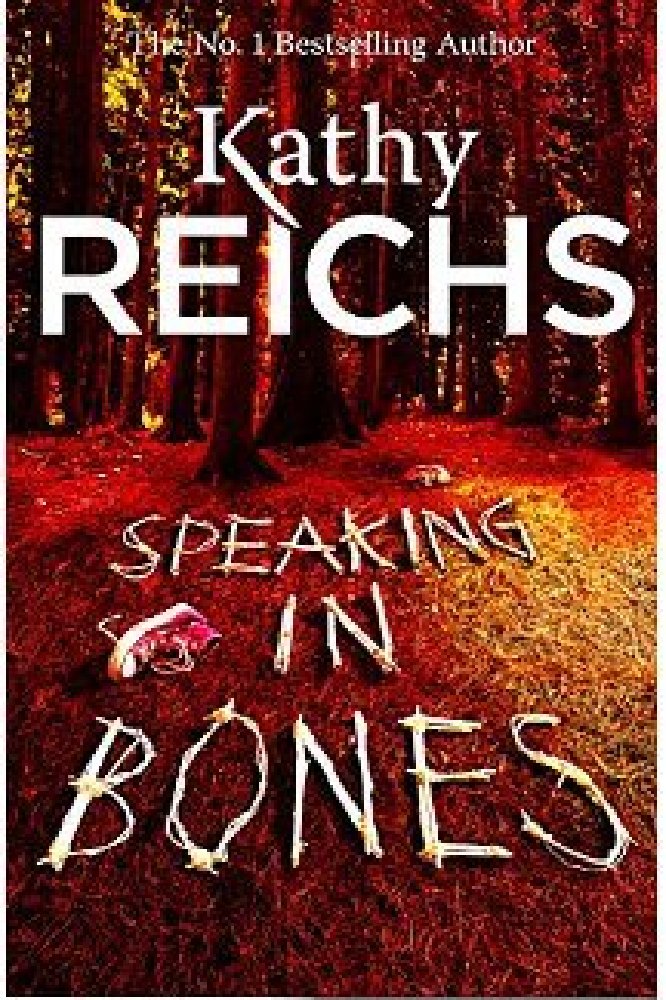I'm a forensic anthropologist, and, of course, an author. Forensics is the application of a broad spectrum of sciences to questions of interest to the legal system.

Speaking in Bones
Locard's Exchange Principle dictates that every contact leaves a trace. Every time
people meet, touch, or simply enter a room, they leave specks of themselves behind and
carry away specks when they go. Those transferred bits of thread, dust,
eyelash, or DNA enable scientists to link perpetrators to victims or to crime scenes. I work with many different specialists, but as a forensic anthropologist, I look at bone. The "evidence" I analyze is the body. I examine decomposed, burned, dismembered, mummified, and skeletonized remains. I may be asked to determine age, sex, race, and height in order to establish ID. I may be asked to determine manner or time since death, or to describe what was done to the body after the victim stopped breathing. All of this experience has come in handy in constructing my forensic thrillers.
In the Temperance Brennan books and the television series Bones, I offer a peek into my professional life. Not every book or episode derives directly from a specific case, but many storylines spring from something I've done, perhaps disaster recovery work, perhaps human rights work, perhaps a case I've heard about from a colleague or observed in the lab.
Déjà Dead (1997) is based on my first serial murder investigation. I was working as a visiting professor at McGill and Concordia Universities and consulting at the Laboratoire de Sciences Judiciaires et de Medecin Legal in Montreal when I was asked to help with a series of grisly murders. By examining the first victim's bones, I was able to determine that the perpetrator had knowledge of anatomy and was skilled in dismemberment. I suspected he had some sort of training in that area and testified to this finding at his trial. The killer turned out to be a butcher. That experience was the nugget that gave rise to my first novel, Déjà Dead.
I originally trained as a bioarchaeologist and am drawn to cases of historical significance. One of my favorites involved Jean LeBer, a woman who died in 1714. In the early nineties, Jean LeBer was proposed to the Vatican for beatification. I was hired by the Archdiocese of Montreal to exhume and analyze her remains. This experience lead to one of the plot lines in my second book, Death du Jour (1999).
Fatal Voyage (2001) grew from my experience with D-MORT, the United States government's Disaster Mortuary Operation Response Teams, a network dedicated to carrying out disaster recovery work. In this book, Tempe is busy recovering victims from a commercial airline disaster when things go terribly wrong. Ironically, one month after the publication of Fatal Voyage, I found myself doing the same grim task as Tempe, working at ground zero following the World Trade Center terrorist attack.
Grave Secrets (2002) has a main story line involving the exhumation of multiple individuals murdered during the long and tragic civil war in Guatemala. For this novel I drew upon my trip with Dr. Clyde Snow to work with the Foundation for Guatemalan Forensic Anthropology. The task: recover skeletons from a mass grave in
the highlands of southwest Guatemala, the victims mostly women and children. I will never forget the wizened old woman who came daily to keep silent vigil. Her four daughters and nine grandchildren lay in the pit we were unearthing. Our pilot for Bones (2005) opens with Temperance Brennan returning from Guatemala and a similar human rights exhumation.
Cross Bones (2005) draws on a visit to Israel, and weaves true facts - strangely unreported Masada bones, a burial box purported to be that of Jesus' brother James, and a recently looted first century tomb - into a fictional modern murder plot. I loved researching this book because it brought me back to my archaeological roots.
In part, the Guatemalan civil war also inspiration for Bones to Ashes (2007). In this case I exhumed and analyzed the remains of Raoul Leger, a Catholic lay-priest from New Brunswick, Canada who was killed and initially buried in a common grave in Guatemala. When the Canadian National Film Board made a documentary about Raoul, his family realized they didn't truly know what had happened to him. They hired me to see what the bones could reveal. Through this experience I learned about the Acadian culture. I combined this cultural setting with the unrelated case of a child whose tiny skeleton had lain unidentified in my lab for many years
Spider Bones (2010) is based on work I did as a consultant to the Joint POW-MIA Accounting Command, a forensic laboratory located at Hickam Air Force Base in Hawaii. JPAC is tasked with recovering and identifying American military personnel killed overseas. The scientists working at JPAC regularly return remains to the families of those lost during World War II, in Korea, and in Southeast Asia. Can't say I hated going to Hawaii twice annually, usually during the winter. Or the return trip to do research for the book!
In 2012, I was honored to be included in a USO (United Service Organization) and ITW (International Thriller Writers) sponsored tour to Afghanistan and Kyrgyzstan to thank the troops for their extraordinary dedication and service. Mark Bowden, Sandra Brown, Clive Cussler, Andrew Peterson and I flew in Blackhawk helicopters to forward operating bases and met with many brave men and women from around the world. Bones of the Lost (2013) draws upon that very moving (and exhausting!) experience.

